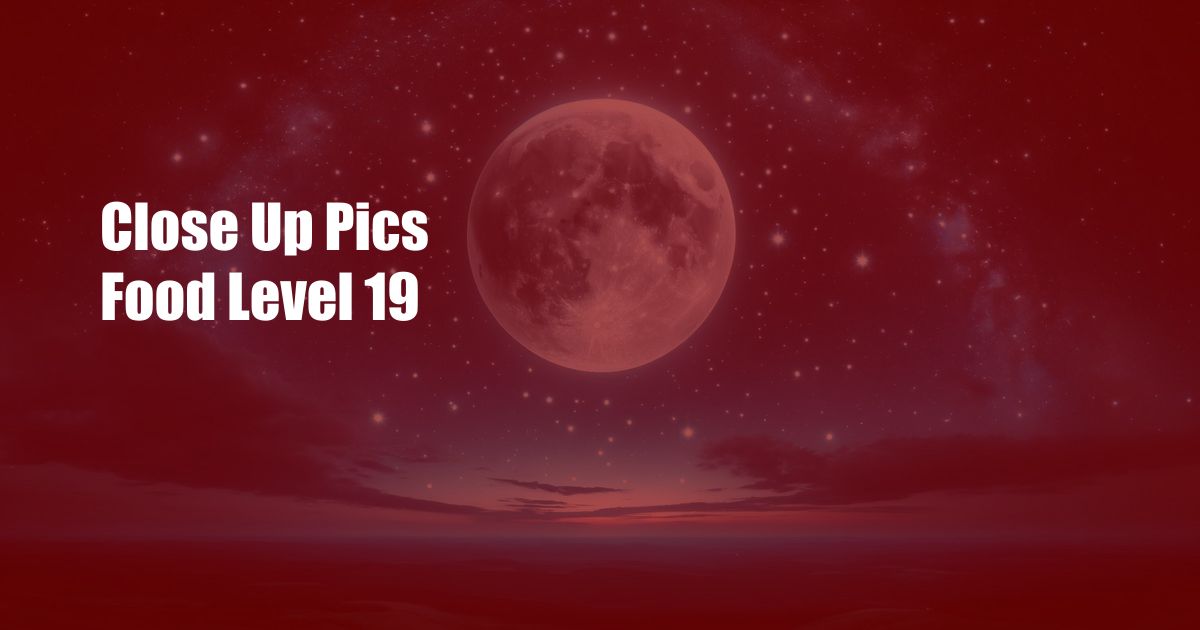
Close-Up Food Photography: Elevating the Art of Dining
As a seasoned food blogger, I’ve witnessed firsthand the transformative power of close-up food photography. From capturing the intricate details of a perfectly seared steak to the delicate petals of a blooming flower, close-up shots have the ability to tantalize our taste buds and evoke a deep appreciation for the culinary arts. In this article, we’ll delve into the world of close-up food photography, exploring its history, techniques, and the latest trends that are shaping this captivating genre.
Close-up food photography is an art form that focuses on capturing detailed and intimate images of food. Its roots can be traced back to the late 19th century, when food photography emerged as a means of documenting the culinary creations of renowned chefs. Over the years, close-up food photography has evolved into a specialized genre, with photographers using various techniques to showcase the beauty and allure of food.
The Art of Focus and Lighting
One of the most important aspects of close-up food photography is focus. By carefully focusing on the desired subject, photographers can create a sense of depth and drama, drawing the viewer’s attention to the key elements of the dish. Lighting also plays a crucial role in close-up food photography. Natural light provides a soft and diffused illumination, while artificial light can be used to create more dramatic and artistic effects.
In addition to focus and lighting, composition is essential in close-up food photography. By carefully arranging the elements of the dish, photographers can create a visually appealing image that tells a story. This may involve using props, such as cutlery, linens, or garnishes, to enhance the overall aesthetic of the shot.
Capturing the Essence of Flavor
One of the most challenging aspects of close-up food photography is capturing the essence of flavor. By using a variety of techniques, photographers can convey the texture, aroma, and taste of a dish through a single image. This can involve using selective focus to highlight the juiciness of a steak or the crispiness of a freshly baked croissant.
Color plays a vital role in conveying flavor in close-up food photography. By carefully adjusting the color balance and saturation, photographers can create images that evoke a sense of warmth, richness, or freshness. This can be particularly important when photographing dishes that rely on vibrant colors, such as tropical fruits or colorful vegetables.
Latest Trends in Close-Up Food Photography
The world of close-up food photography is constantly evolving, with new trends emerging all the time. One of the most recent trends is the use of overhead shots, which provide a bird’s-eye view of the dish. This angle can be particularly effective for showcasing the overall composition of a meal or for capturing the intricate details of a complex dish.
Another emerging trend in close-up food photography is the use of food styling. Food stylists work closely with photographers to create visually appealing dishes that are perfect for the camera. This may involve arranging the food in a specific way, using props to enhance the aesthetic, or even applying special effects to make the food look more appealing.
Tips for Aspiring Close-Up Food Photographers
If you’re interested in pursuing close-up food photography, here are a few tips to help you get started:
- Use a macro lens: A macro lens is essential for close-up food photography, as it allows you to focus on small details and capture images with a shallow depth of field.
- Pay attention to lighting: Natural light is always best for close-up food photography, but you can also use artificial light to create more dramatic effects. Experiment with different lighting angles and intensities to find the best results.
- Compose your shots carefully: Take the time to arrange the elements of your dish in a visually appealing way. Use props and garnishes to enhance the composition and create a sense of depth.
- Capture the essence of flavor: Use a variety of techniques to convey the texture, aroma, and taste of your food through your images. This may involve using selective focus, adjusting the color balance, or using props to create a sense of atmosphere.
- Edit your photos carefully: Once you’ve captured your shots, take the time to carefully edit them. This may involve cropping, adjusting the brightness and contrast, and removing any unwanted distractions.
Common Questions About Close-Up Food Photography
Q: What are the best camera settings for close-up food photography?
A: The best camera settings for close-up food photography will vary depending on the specific conditions, but a good starting point is to use a wide aperture (f/2.8 or wider) to create a shallow depth of field, a shutter speed of at least 1/60th of a second to avoid blur, and an ISO of 100 or 200 to minimize noise.
Q: What are some tips for styling food for close-up photography?
A: Some tips for styling food for close-up photography include using a variety of colors and textures, arranging the food in a visually appealing way, and using props to enhance the composition. You may also want to consider adding a splash of water or oil to make the food look more appetizing.
Conclusion
Close-up food photography is a captivating genre that allows us to appreciate the beauty and artistry of culinary creations. By mastering the techniques of focus, lighting, and composition, photographers can create images that evoke a sense of hunger and desire. As the world of close-up food photography continues to evolve, we can expect to see even more innovative and exciting images that showcase the beauty of food in all its forms.
Are you interested in learning more about close-up food photography? Share your thoughts and questions in the comments below!

 Hogki.com Trusted Information and Education News Media
Hogki.com Trusted Information and Education News Media